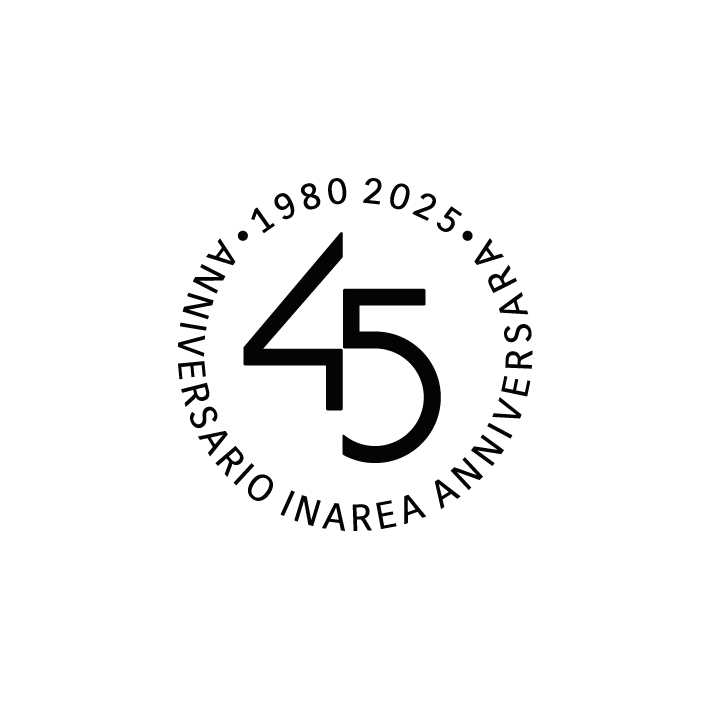Inarea’s 45 years offer a precious opportunity to reflect on the past while imagining the future. Although it is usually the ‘round-number birthdays’ that inspire the deepest reflections, this milestone nonetheless invites us to take stock of brand-identity design in an era in which both design and communication have been transformed—technically and in content—more than ever before. Many of the rules and tools of 45 years ago no longer exist, yet the fundamental principles—those ‘as old as the world itself’—remain steadfast.
Antonio Romano, what inspiration guided the very beginning of this journey?
At the beginning, we were driven by the dream of total design: the idea of designing ‘from the spoon to the city,’ where graphic design became a bridge between disciplines— a universal language for every form of expression. This ideal has deep, age-old roots: we can think back to the era of the Herald, who designed the prince’s coat of arms and applied it to everything—architecture, uniforms, and textiles—creating a symbolic system of belonging in times of widespread illiteracy. In the end, the underlying logic of branding has not changed all that much. Even today, despite an extraordinary technical and technological transformation, the principles remain the same.
In recent decades, communication has undergone an astonishing acceleration. With the advent of digital, what aspects of branding have changed the most?
The 1980s were the era of visual exaltation. Then came the 1990s, with mobile phones and the Internet—a convergence that would change the course of human history. Attention shifted from the heraldry of the product to that of the corporate realm, but the next step was the relationship itself: products and services became experiences, and the individual moved to the center of everything. We live and work within a digital dimension—an immaterial space in which we spend much of our active time. The physical touchpoints of the past have been integrated—and often replaced—by countless online interactions. “The real challenge today is to build coherence—in words, in images, and in the brand’s digital gestures—because the user’s judgment is formed in an instant, and is often swift and unforgiving.
In such a complex and fragmented world, what core principle is essential for creating a successful identity?
The principle we uphold is authenticity—the foundation that makes a brand’s statements about itself credible and verifiable. Without authenticity, the audience turns away. This stems from the convergence of a trilogy: Purpose (why you do what you do), Process (how you do it), and People (those who make it possible, both inside and outside the organization).
Is brand identity today becoming increasingly multidimensional and multisensory? And is Inarea also moving in that direction?
Certainly. For us, the concept of Brand Sense has become almost an obsession. But in truth, it is anything but new. The Church, for example, is a master of branding: the scent of incense, the verticality of the bell tower dominating the view and carrying the sound of its bells, the atmosphere that weaves together sight, smell, and hearing into a single experience— not to mention Communion, the sublime moment of the celebration, where even taste is engaged. Even Romanesque architecture emerged in response to the need for better sound propagation following the introduction of Gregorian chant. All of this teaches us that the more a brand succeeds in engaging multiple senses and generating synesthetic coherence, the stronger and more memorable its impact will be.
How are you at Inarea preparing for your “golden anniversary”?
We are integrating skills that we once entrusted to external partners—especially in the digital realm—and we are embracing Artificial Intelligence as a tool to amplify both the speed and the depth of our content. Our craft requires us to look through the eyes of those who observe us—our stakeholders—yet the essence of identity value does not change: we aim to continue creating, through design, an implicit and immediate form of communication, capable of generating impact without the need for explanation. As Oscar Wilde said, “beauty has the advantage over genius in that it needs no explanation.” We will therefore continue to give shape to a promise of the future, remaining an enterprise inspired by the Renaissance workshop, yet equipped with a ‘brand corridor’ capable of orchestrating and seamlessly coordinating the many facets of communication.

